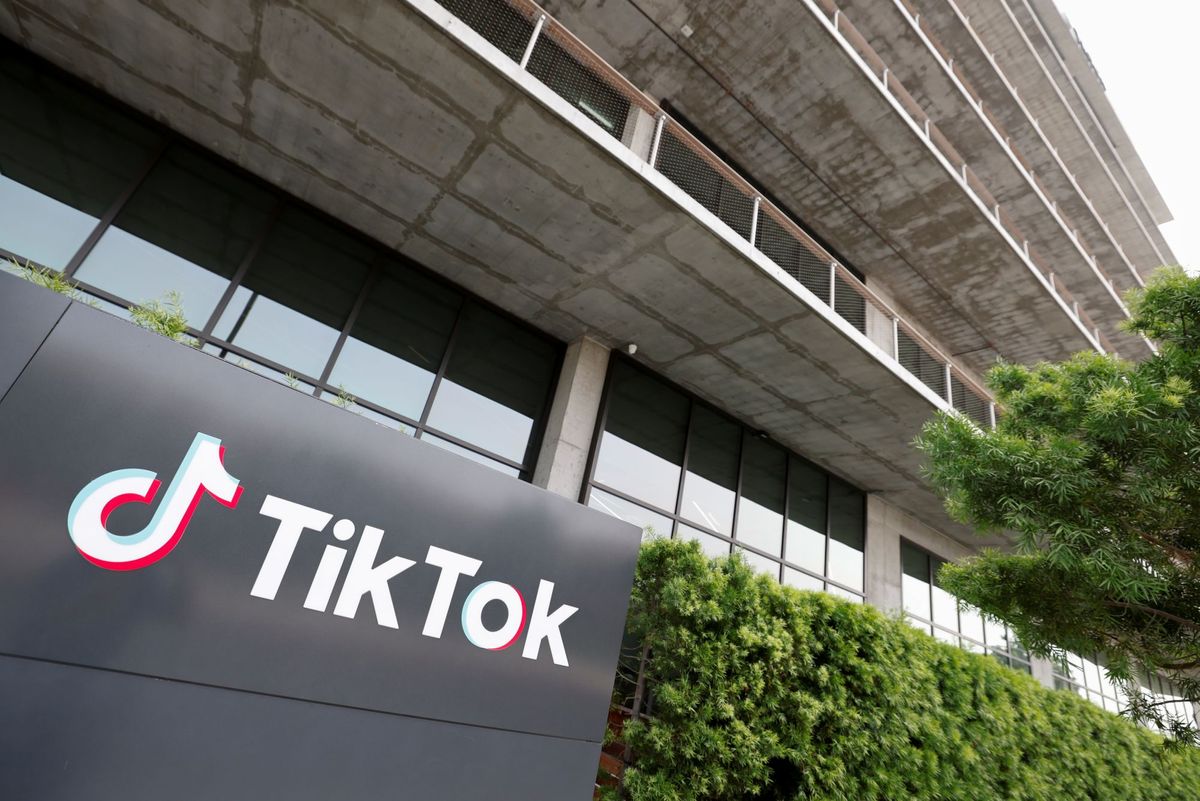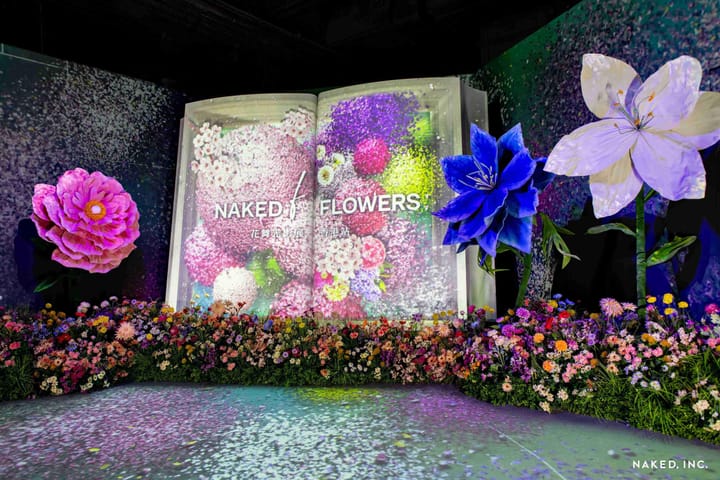Musical artists and labels are turning to TikTok for greater exposure

A few minutes every morning is all you need.
Stay up to date on the world's Headlines and Human Stories. It's fun, it's factual, it's fluff-free.
Due to the app’s influence, musicians and music labels are looking to the platform as a means for gaining exposure.
In the 1996 Tom Hanks comedy, “That Thing You Do!,” the members of the fictional 1960s rock band at the center of the movie break out into exuberant cheers and dancing when they hear their song on the radio for the first time. It’s a pivotal moment for The Wonders (or The Oneders) and the movie.
If that same scene were recreated for a modern musical act, the old school radio would probably need to be replaced by a TikTok video.
TikTok is the China-based social media platform that allows users to upload short videos (between 15 seconds and one minute long), often with quick edits and musical accompaniment. Though user-created videos have addressed politics in China and the United States, as well as misinformation, the most popular videos tend to be humorous clips, dance videos, or a mix of both.
Music is especially key to the platform’s success and vice versa. While the app has grown its base on the back of viral dance clips and catchy tunes (despite TikTok’s limitations as a platform), musical artists have also been benefiting from the reciprocal relationships. Over tightly choreographed videos, pop songs are given a spotlight that can be more valuable than radio airplay.
Due to the app’s influence, musicians and music labels are looking to the platform as a means for gaining exposure. Though TikTok’s popularity has grown among all ages of users, the evolution of TikTok into a music hitmaker is in large part due to Generation Z, for whom radio DJs and MTV are not the gatekeepers of pop stardom.
Embracing TikTok
There was once a time when the music industry resisted the unfettered spread of music on the internet. There was the infamous fight against Napster and other file-sharing programs, which at one time looked as if they might bring down the industry entirely. The industry also spent a decade in a battle with YouTube over payments for music videos and unlicensed use of music in user-created videos.
These days, though, music labels are recognizing the value in viral hits and social media exposure. While many people still listen to radio on a daily basis, including 55% of Generation Z, listening habits are more fragmented these days, with younger people in particular getting their music through varied platforms, including streaming services and social media platforms.
For artists and labels seeking exposure to potential fans, TikTok is clearly a useful medium.
A report by the company found that in 2020, “Over 176 different songs surpassed 1 billion video views as TikTok sounds.” Additionally, in the last year, 70 artists who first broke out on the platform have now signed record deals with music labels.
Last August, TikTok signed a deal with UnitedMasters, an independent music distributor, with the goal of helping smaller artists build their audience through viral hits. At the same time, labels are turning to influencers on the app with the hope of using their built-in audience to get songs trending.
Hoping for a song to go viral in a 15-second clip may not be the most expedient or reliable path to superstardom. Still, there are enough examples of artists who have enjoyed a career boost thanks to TikTok that the platform cannot be ignored by the music industry.
The rise of Doja Cat
In May 2020, Pitchfork published an article on the R&B/hip-hop artist Doja Cat that traced “the singer-rapper’s rise from viral curio to TikTok phenom to the No. 1 artist in the country.”
By the end of last year, Doja Cat’s single “Say So” had landed at 11 on Billboard’s Hot 100 Songs list for the year, just behind far more established artists like The Weeknd, Harry Styles and Maroon 5. The song was second on the R&B chart and fourth on the Dance/Mix Show Airplay list. Likewise, Doja Cat was fifth on the Streaming New Artists list.
As the Pitchfork piece explains, though, that ascendancy was not a foregone conclusion in November 2019 when Doja Cat released her second album, “Hot Pink,” which includes “Say So.” Though Doja Cat had a viral hit in 2018 with “Moo” and its low-fi, sexually suggestive video, she also faced a backlash for old tweets in which she’d used homophobic language.
After a string of singles off the album had been met with underwhelming reception, “Say So” was released as the fifth single in early 2020 and became Doja Cat’s first Top 20 hit.
That success can largely be attributed to a 15-second clip that TikTok user Haley Sharpe uploaded on December 11, 2019. In the video, Sharpe performs a quick choreographed dance to the song’s chorus in front of her shower. It didn’t take long for the video and song to blow up.
That viral success led to the release of a remix of “Say So” that featured rapper Nicki Minaj. The remixed version became the first number one hit for both artists. Doja Cat recognized the support of her TikTok fans by enlisting Sharpe and another popular TikTok dancer, Donté Colley, to appear in her disco-themed video for the song.
On TikTok, “Say So” is now featured in over 15 million video clips, including videos of some of the app’s biggest stars, like Charlie D’Amelio and James Charles, doing Sharpe’s choreography.
Creating viral hits
Doja Cat is not the only artist who has TikTok to thank for a successful 2020. Sitting above her on many of the Billboard end-of-year lists was hip-hop artist Roddy Rich, who topped the Streaming New Artist list. His single “The Box” landed on TikTok’s Top Songs list for 2020 (alongside “Say So”) and was the song that had the longest sustained run on Billboard’s Hot 100 list last year.
Like “Say So,” “The Box” was released as a single in January and was boosted by viral clips of people dancing to the song. New singles aren’t the only songs getting a lift by TikTok, though.
Spotify’s Viral 50 chart provides the most viral tracks in a country at any given time. For the last two months, alongside a string of songs released in 2020 and 2021, the song “Pierre” by singer Ryn Weaver has been a regular feature on the US chart. What stands out about the presence of “Pierre” is that the song was released in 2015 on Weaver’s album, “The Fool.”
Other than an acoustic performance of the song, Weaver never released a video for the song. Nor has the song appeared in a recent TV show or commercial, something that has previously fueled a song’s chart rise years after its release. Instead, Weaver’s sudden virality is due to her song being selected by TikTok users. Weaver acknowledged as much on Twitter in January.
Even major artists of yesteryear can get the TikTok bump, as when Fleetwood Mac’s “Dreams” (originally released in 1977) reentered the Billboard chart at number 21 last year. The song was featured in the September 2020 viral clip of Nathan Apodaca (username: @420doggface208) riding a skateboard while drinking cranberry juice and lip-syncing the song.
The clip also turned into a marketing boon for Ocean Spray, the company whose juice Apodaca is seen drinking in the video.
The speed at which viral videos and songs come and go makes it impossible to stay on top of every trend on TikTok. Plenty of songs will have a moment and then quickly disappear, just as they always have. Some, however, will have a lasting impact and launch the artist into a bigger career.
At this moment, it’s safe to assume a new song is probably rising through TikTok’s algorithms and on the verge of crossing over into the mainstream. That’s what happened with Disney Channel actress Olivia Rodrigo’s “Driver’s License,” which rode viral success straight into a Saturday Night Live skit in late February.

Most artists who are hoping for success via TikTok won’t have Rodrigo’s established platform, but that won’t stop them from dreaming of releasing the next viral hit. It may be only a matter of time before TikTok influencers have as much say in an artist’s success or failure as the radio DJs of the 1960s and 70s once had.
Have a tip or story? Get in touch with our reporters at tips@themilsource.com




Comments ()